This is an old revision of this page, as edited by Beboj3140 (talk | contribs) at 08:29, 18 July 2016 (Undid revision 730322269 by X4n6 (talk)). The present address (URL) is a permanent link to this revision, which may differ significantly from the current revision.
Revision as of 08:29, 18 July 2016 by Beboj3140 (talk | contribs) (Undid revision 730322269 by X4n6 (talk))(diff) ← Previous revision | Latest revision (diff) | Newer revision → (diff)
| Universitetet i Oslo (Det Kongelige Frederiks Universitet) | |
| File:University of Oslo logo.png | |
| Latin: Universitas Osloensis (Universitas Regia Fredericiana) | |
| Type | Public university |
|---|---|
| Established | 1811 |
| Rector | Ole Petter Ottersen (2009–present) |
| Academic staff | 3,425 (2014) |
| Students | 27,227 (2014) |
| Location | Oslo, Norway |
| Affiliations | EUA |
| Website | uio.no |
The University of Oslo (Template:Lang-no), until 1939 named the Royal Frederick University (Template:Lang-no), is the oldest university in Norway, located in the Norwegian capital of Oslo. Until 1 January 2016 it was the largest Norwegian institution of higher education in terms of size, now surpassed only by the Norwegian University of Science and Technology. The Academic Ranking of World Universities has ranked it the 58th best university in the world and the third best in the Nordic countries. While Times Higher Education World University Rankings has ranked it the 135th best university in the world and the seventh best in the nordics.
The university has approximately 27,700 students and employs around 6,000 people. Its faculties include (Lutheran) Theology (Norway's state religion since 1536), Law, Medicine, Humanities, Mathematics, natural sciences, social sciences, Dentistry, and Education. The university's original neoclassical campus is located in the centre of Oslo; it is currently occupied by the Faculty of Law. Most of the university's other faculties are located at the newer Blindern campus in the suburban West End. The Faculty of Medicine is split between several university hospitals in the Oslo area.
The university was founded in 1811 and was modeled after the University of Copenhagen and the recently established University of Berlin. It was originally named for King Frederick VI of Denmark and Norway and received its current name in 1939. The university is informally also known as Universitetet ("the university"), having been the only university in Norway, until 1946 and was commonly referred to as "The Royal Frederick's" (Det Kgl. Frederiks), prior to the name change.
The University of Oslo is home to five Nobel Prize winners. The Nobel Peace Prize was awarded in the university's Atrium, from 1947 to 1989, making it the only university in the world to be involved in awarding a Nobel Prize. Since 2003, the Abel Prize is awarded in the Atrium.
History
| This section does not cite any sources. Please help improve this section by adding citations to reliable sources. Unsourced material may be challenged and removed. (September 2014) (Learn how and when to remove this message) |
Early history
In 1811, a decision was made to establish the first university in the Dano-Norwegian Union, after a successful campaign which resulted in an agreement with King Fredrik VI. Fredrick agreed to the establishment of an institution that he had earlier believed might encourage political-separatist tendencies. In 1813, The Royal Fredrik's University was founded in Christiania, a small city during that time. Circumstances then changed dramatically one year into the commencement of the university, as Norway proclaimed independence and adopted its own constitution. However, independence was somewhat restricted, as Norway was obliged to enter into a legislative union with Sweden based on the outcome of the War of 1814. Norway retained its own constitution and independent state institutions, whilst royal power and foreign affairs were shared with Sweden. At a time when Norwegians feared political domination by the Swedes, the new university became a key institution that contributed to Norwegian political and cultural independence.
The main function of The Royal Frederick University was to educate a new class of (higher) civil servants. Although Norway was in a legislative union with Sweden, it was a sovereign state, and needed educated people to run it. Civil servants were needed, as well as parliamentary representatives and ministers. The university also became the centre for a survey of the country—a survey of national culture, language, history and folk traditions. The staff of the university strove to undertake a wide range of practical tasks necessary for developing the infrastructure critical to a modern society. When the union with Sweden was dissolved in 1905, the university became important for producing highly educated men and women who could serve as experts in a society which placed increasing emphasis on ensuring that all its citizens enjoy a life of dignity and security. Education, health services and public administration were among those fields that recruited personnel from among the university's graduates. In 1939, the university was renamed the University of Oslo and it remained Norway's only university until 1946. .
Throughout the 1800s, the university's academic disciplines became more specialised. One of the major changes in the university came during the 1870s when a greater emphasis became placed upon research. The management of the university became more professional, academic subjects were reformed and the forms of teaching evolved. Disciplines became more specialized and classical education came under increasing pressure.
1900–1945
Research changed qualitatively around the turn of the century as new methods, scientific theories and forms of practice changed the nature of research. It was decided that teachers should arrive at their posts as highly qualified academics and continue academic research alongside their role as teachers. Scientific research—whether to launch or test out new theories, to innovate or to pave the way for discoveries across a wide range of disciplines—became part of the increased expectations placed on the university. Developments in society created a need for more and more specialised and practical knowledge, not merely competence in theology or law, for example. The university strove to meet these expectations through increasing academic specialisation.
The position of rector was established by Parliament in 1905 following the Dissolution of the Union. Waldemar Christofer Brøgger was Professor of Geology and became the university's first rector. Brøgger vacillated between a certain pessimism and a powerfully energetic attitude regarding how to procure finances for research and fulfill his more general funding objectives. With the establishment of the national research council after World War II, Brøgger's vision was largely fulfilled; research received funding independent of teaching. This coincided with a massive rise in student enrollment during the 1960s, which again made it difficult to balance research with the demands for teaching. In the years leading up to 1940, research was more strongly linked with the growth of the nation, with progress and self-assertion; research was also seen to contribute to Norway's commitment to international academic and cultural development.
During the period after World War I, research among Norwegian researchers resulted in two Nobel prizes. The Nobel prize in Economics was awarded to Ragnar Frisch. The Nobel prize in Chemistry was awarded to Odd Hassel. In the field of linguistics, several Norwegian researchers distinguished themselves internationally. Increased research activity during the first half of the 1900s was part of an international development that also included Norway. Student enrollment doubled between 1911 and 1940, and students were recruited from increasingly broad geographical, gender and social bases. The working class was still largely left behind, however.
During the German occupation, which lasted from 1940–1945, the university rector, Didrik Arup Seip, was imprisoned. The university was then placed under the management of Adolf Hoel, a NS (Norwegian Nazi Party) appointee. A number of students participated in the Norwegian resistance movement; after fire was set in the university auditorium, Reich Commissar Terboven ordered the university closed and the students arrested. A number of students and teachers were detained by the Germans nearly until the end of the war.
1945–2000
After WWII, public authorities made loans available to students whose families were unable to provide financial assistance; the State Educational Loan Fund for Young Students was established in 1947. As a result, the post-war years saw a record increase in student numbers. Many of these students had been unable to begin their studies or had seen their studies interrupted because of the war; they could now enroll. For the 1945 autumn semester, 5951 students registered at the university. This represented the highest student enrollment at UiO up to that time. In 1947, the number had risen to more than 6000 students. This represented a 50 per cent increase in the number of students compared to the number enrolled prior to the war.
In no previous period had a single decade brought so many changes for the university as the 1960s. The decade represented an unparalleled period of growth. From 1960 to 1970, student enrollment tripled, rising from 5,600 to 16,800. This tremendous influx would have been enough in itself to transform the way the university was perceived, from both the inside and the outside. As it turned out, the changes were even more comprehensive. The university campus at Blindern was expanded, and the number of academic and administrative employees rose. The number of academic positions doubled, from fewer than 500 to around 1,200. The increase in the number of students and staff transformed traditional forms of work and organisation. The expansion of the Blindern complex allowed the accommodation of 7,000 students. The explosive rise in student numbers during the 1960s impacted the Blindern campus in particular. The faculties situated in central Oslo—Law and Medicine—experienced only a doubling in student enrollment during the 1960s, while the number of students in the humanities and social sciences tripled.
By 1968, revolutionary political ideas had taken root in earnest among university students. The "Student Uprising" became a turning point in the history of universities throughout the western world. Often, the outlook for students in the 1960s was bleak. More than ever before came from non-academic backgrounds and had few role models. The "University of the Masses" was unable to lift all its students to the "lofty, elite positions" enjoyed by previous generations of academics. Many students dissociated themselves, therefore, from the so-called "establishment" and the way the establishment functioned. Many were impatient and wanted to use their knowledge to change society. It was thought that academics should stand in solidarity with the underprivileged.
The most fundamental change in the student population was the increasing proportion of women students. Throughout the 1970s, the number of women increased until it made up the majority of students. At the same time, the university became a centre for the organised women's liberation movement, which emerged in the 1970s.
Up until the millennium, the number of students enrolled at the university rose exponentially. In 1992, UiO implemented a restriction on admissions for all of its faculties for the first time. A large part of the explanation for the high student numbers was thought to be found in the poor job market. In 1996, there were 38,265 students enrolled at UiO. This level was approximately 75 per cent above the average during the 1970s and 1980s. The strong rise in student numbers during the 1990s was attributed partially to the poor labour market.
Hierarchy
Main article: Academic ranks in NorwayThe highest position at the university is Professor, i.e. "full Professor." In Norway, the title "Professor," which is protected by law, is only used for full professors. Prior to 1990, all professors were appointed for life to their chairs by the King-in-Council, i.e. by the King upon the advice of the Cabinet. The position below Professor was historically Docent (translated as Reader in a UK context and Professor in an American context). In 1985, all Docents became full professors. The most common positions below that are førsteamanuensis (translated as Associate Professor), and amanuensis or universitetslektor (translated as Lecturer or Assistant Professor). At the University of Oslo, almost all new permanent positions are announced at the Associate Professor level; an associate professor may apply for promotion to full professor if he or she holds the necessary competence.
Additionally, there are temporary, qualifying positions such as stipendiat (Research Fellow) and postdoktor (Postdoctoral Fellow).
A small number of employees with few or no teaching obligations hold the special research career pathway ranks researcher, senior researcher and research professor, which correspond to assistant professor, associate professor and professor, respectively.
Several other less common academic positions also exist. Historically, only professors had the right to vote and be represented in the governing bodies of the university. Originally, all professors were automatically members of the Collegium Academicum, the highest governing body of the university, but soon afterwards its membership was limited. Docents were granted the right to vote and be represented in 1939 and other academics and students in 1955. In 1975, the technical-administrative support staff was also granted the right to vote and be represented in certain bodies, as the last group. Formerly by law, and now by tradition, the highest positions, such as Rector or Dean, are only held by professors. They are elected by the academic community (academics and students) and by the technical-administrative support staff, but the votes of the academics carry significantly more weight.
Faculties
The university's old campus, strongly influenced by Prussian architect Karl Friedrich Schinkel's neoclassical style, is located in the centre of Oslo near the National Theatre, the Royal Palace and the Parliament. The old campus was then occupied by the Faculty of Law and most of the other faculties have been transferred to the Blindern campus in the suburban West End, erected in the 1930s. The Faculty of Medicine is split between several university hospitals in the Oslo area.
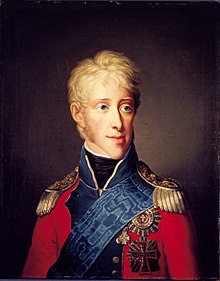
Theology
The Faculty of Theology conducts research and teaching within theology, Christian studies, inter-religious studies and diaconal studies.
Law
- Centre for European Law
- Department of Criminology and the Sociology of Law
- Department of Private Law
- Norwegian Research Center for Computers and Law (NRCCL)
- Department of Public and International Law
- Norwegian Centre for Human Rights
- Scandinavian Institute of Maritime Law

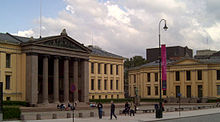
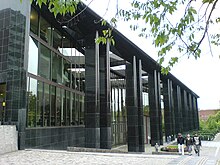
Medicine
- Institute of Health and Society
- Institute of Basic Medical Sciences
- Institute of Clinical Medicine
Centres of Excellence:
- Norwegian Centre for Mental Disorders Research (NORMENT)
- Centre for Immune Regulation (CIR)
- Centre for Cancer Biomedicine (CCB)
Humanities
- Department of Archaeology, Conservation and History
- Department of Cultural Studies and Oriental Languages
- Department of Philosophy, Classics, History of Art and Ideas
- Department of Literature, Area Studies and European Languages
- Department of Linguistics and Scandinavian Studies
- Department of Media and Communication
- Department of Musicology
- Centre for Ibsen Studies
- Centre for the Study of Mind in Nature
- The Norwegian University Centre in St. Petersburg
- The Norwegian Institute in Rome
- Centre for French-Norwegian research cooperation within the social sciences and the humanities
- Center for Development and Environmanet
Mathematics and natural sciences
- Department of Biosciences
- Department of Chemistry
- Department of Geosciences
- Department of Informatics
- Department of Mathematics
- Department of Physics
- Institute of Theoretical Astrophysics
- School of Pharmacy
- Centre for Entrepreneurship
- Centre for Earth Evolution and Dynamics (CEED)
- Centre for Material sciences and Nanotechnology (SMN)
- Centre of Mathematics for Applications (CMA)
- Centre for Ecological and Evolutionary Synthesis (CEES)
- Centre for Theoretical and Computational Chemistry (CTCC)
- Centre for Innovative Natural Gass Processes and Products (inGAP)
- Centre for Accelerator Based Research and Energy Physics (SAFE)
Dentistry
- Institute of Oral Biology
- Institute of Clinical Dentistry
Social sciences
- Department of Sociology and Human Geography
- Department of Political Science
- Department of Psychology
- Department of Social Anthropology
- Department of Economics
- Centre for technology, innovation and culture
- ARENA – Centre for European Studies
- Centre of Equality, Social Organization, and Performance (ESOP)
Education
- Department of Teacher Education and School Research
- Department of Special Needs Education
- Department for Educational Research
- Centre for Educational Measurement at the University of Oslo (CEMO)
- InterMedia
Other units
The University of Oslo has several units which are not part of one of the faculties, including some interdisciplinary research centres, research centres abroad, the scientific museums, and libraries:
Research centres and other special units
- Norwegian Centre for Violence and Traumatic Stress Studies (wholly owned by the university)
- Centre for International Climate and Environmental Research (a foundation affiliated with the university)
- The Biotechnology Centre of Oslo
- Centre for Gender Research
- Norwegian Institute in Rome (wholly owned by the university)
- Barony Rosendal (wholly owned by the university)
- Molecular Life Science
- International Summer School
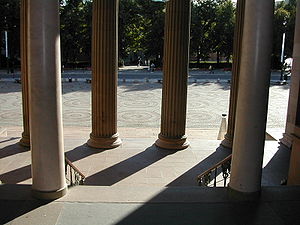
Library

- Library of Medicine and Health Sciences
- Library of Humanities and Social Sciences
- Faculty of Law Library
- Faculty of Mathematics and Natural Sciences Library
Museums
- Natural history
- Mineralogical-geological Museum
- Paleontological Museum
- Zoological Museum
- Botanical Garden
- Botanical Museum
- Cultural history
- Historical Museum
- Collection of Coins and Medals
- Ethnographic Museum
- Viking Ship Museum
Notable academics and alumni
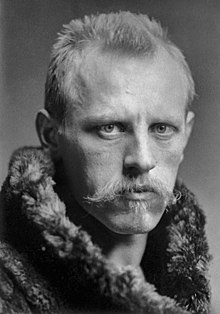
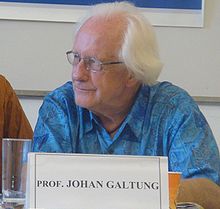
The University of Oslo has a long list of notable academics and alumni, spanning the fields of scholarship covered by the university. The university is home to five Nobel Prize winners and is institutionally tied to some of the most prestigious prizes in the world. The Nobel Peace Prize was awarded in the university's atrium between 1947 and 1989, thus making it the only university to host a Nobel Prize ceremony. Since 2003, the Abel Prize is awarded in the university's atrium.
In July 2015, the University received intense criticism for allowing Anders Behring Breivik to be admitted to study for a 3-year baccalaureate degree in political science (including courses on democracy, human rights, and respect for minorities). He is the perpetrator of the 22 July, 2011 Norway attacks, Norway's worst incident of violence since World War II; he only received 21 years in prison (he can be paroled after 10 years; but he can be confined after the 21 years are up, allowable for five years at a time, if he is viewed as still dangerous, which is likely, resulting in an actual life sentence). The Rector said they were obliged to follow the regulations, which allowed it because his grades were good enough. It will be done in solitary confinement, with guards delivering his assignments and the finished work and the grades.
Academics
Some of the notable academics of the university are:
- Victor Moritz Goldschmidt (Professor of Mineralogy and Petrography, Father of Geochemistry and Crystal Chemistry)
- Vilhelm Aubert (Professor of Sociology)
- Fredrik Barth (Professor of Social Anthropology)
- Jon Bing (Professor of Law; pioneer of legal informatics)
- Nils Christie (Professor of Criminology)
- Ole-Johan Dahl (Professor of Computer Science)
- Tove Stang Dahl (Professor of Law; pioneer of feminist jurisprudence)
- Ragnar Frisch (Professor of Economics)
- Ivar Giæver (Professor of Physics)
- Johan Galtung (Professor of Peace and Conflict Studies; founder of the field)
- Erik Grønseth (Professor of Sociology; founder of Norwegian family sociology)
- Francis Hagerup (Professor of Law)
- Viggo Hagstrøm (Professor of Law)
- Odd Hassel (Professor of Chemistry)
- Harriet Holter (Professor of Social Psychology)
- Trygve Haavelmo (Professor of Economics)
- Thomas Mathiesen (Professor of Sociology)
- Fridtjof Nansen (Professor of Zoology)
- Arnved Nedkvitne (Professor of History)
- Arne Næss (Professor of Philosophy; founder of deep ecology)
Alumni
- Gro Harlem Brundtland – Former prime minister of Norway.
- Åse Kleveland – Norwegian singer and politician.
- Fridtjof Nansen – Arctic explorer and Nobel Prize Laureate.
- Harrison Schmitt – Former American astronaut.
- Petrit Selimi – Deputy Minister of Foreign Affairs of Kosovo.
- Baldwin Spencer – Prime Minister of Antigua and Barbuda.
- Jens Stoltenberg – Former prime minister of Norway and current Secretary General of NATO.
- Thor Heyerdahl – Ethnographer and adventurer.
- Kåre Willoch – Former prime minister of Norway.
Rectors
Main article: List of rectors of the University of OsloSeal

The seal of the University of Oslo features Apollo with the Lyre, and dates from 1835. The seal has been redesigned several times, most recently in 2009.
Fees
Like all public institutions of higher education in Norway, the university does not charge tuition fees. However, a small fee of 550 kr (roughly US$70) per term goes to the student welfare organisation Foundation for Student Life in Oslo, to subsidise kindergartens, health services, housing and cultural initiatives, the weekly newspaper Universitas and the radio station Radio Nova.
In addition the students are charged a copy and paper fee of 100 kr (roughly US$17) for full-time students and 50 kr (roughly US$8.50) for part-time students. Lastly a voluntary sum of 30 kr (roughly US$5) is donated to SAIH (Studentenes og Akademikernes Internasjonale Hjelpefond).
Rankings
Template:Infobox world university ranking In 2015, Shanghai Jiao Tong University's Academic Ranking of World Universities ranked UiO 58th worldwide and the best in Norway, while the 2016 Times Higher Education World University Rankings ranked UiO 135th.
The 2015/16 rankings of the QS World University Rankings, ranked UiO 135th worldwide, and the 2015 Webometrics Ranking of World Universities ranked UiO 68th worldwide.
The 2015 rankings of the Center for World University Rankings (CWUR), which "publishes the only global university ranking that measures the quality of education and training of students as well as the prestige of the faculty members and the quality of their research without relying on surveys and university data submissions", ranked UiO 99th worldwide.
See also
References
- "SCANDINAVIAN INSTITUTE OF MARITIME LAW, UNIVERSITY OF OSLO (UiO) AT OSLO, NORWAY". EduMaritime.com. Retrieved 31 May 2015.
- "Nå er det offisielt: NTNU blir størst i Norge". http://www.universitetsavisa.no/. 19 June 2015. Retrieved 1 May 2016.
{{cite web}}: External link in|work= - Bothwell, Ellie (15 August 2015). "Academic Ranking of World Universities 2015 results". timeshighereducation.co.uk. Retrieved 15 August 2015.
- "World University Rankings 2015". Retrieved 22 July 2015.
- "Nobel Prize Laureates". Retrieved 14 June 2013.
- "Prisutdelingen". Royal Swedish Academy of Sciences. Retrieved 4 November 2012.
- "SCANDINAVIAN INSTITUTE OF MARITIME LAW, UNIVERSITY OF OSLO (UiO) AT OSLO, NORWAY". EduMaritime.com. Retrieved 31 May 2015.
- "Prisutdelingen". Nobels Fredspris (in Norwegian). Det Norske Nobelinstitutt. Retrieved 22 September 2012.
- http://www.msn.com/en-us/news/crime/mass-killer-breivik-to-study-at-oslo-university-from-jail/ar-AAd5I2E
- "Kopiavgiften" (in Norwegian). University of Oslo. 3 September 2010. Retrieved 16 October 2010.
- "Top 500 World Universities". Shanghai Jiao Tong University. Retrieved 20 December 2015.
- "World University Rankings 2015". Retrieved 22 July 2015.
- "QS World University Rankings 2014/15 Results".
- "University of Oslo Ranking". Retrieved 21 July 2015
- "Webometrics Ranking of World Universities". Retrieved 21 July 2015
- "Brief Description CWUR". Retrieved 21 July 2015
- "University of Oslo Ranking". Retrieved 21 July 2015
Further reading
- John Peter Collett: Historien om Universitetet i Oslo, Universitetsforlaget 1999
External links
| University of Oslo | |
|---|---|
| History | |
| Campuses | |
| Faculties | |
| Institutes and centers | |
| Museums | |
| Hospitals | |
| Affiliated institutes | |
| Journals | |
| Student life | |
| Universities and colleges in Norway | |
|---|---|
| Established state universities (U5 group) | |
| New state universities | |
| State specialised universities | |
| Private specialised universities | |
| State university colleges | |
| Private university colleges | |
| See also: University colleges with accredited study programs There are also several institutions with approved studies at college level, but without institutional accreditation as a college. These still have the right to call themselves a university college. | |
59°56′23.77″N 10°43′19.43″E / 59.9399361°N 10.7220639°E / 59.9399361; 10.7220639
Categories: